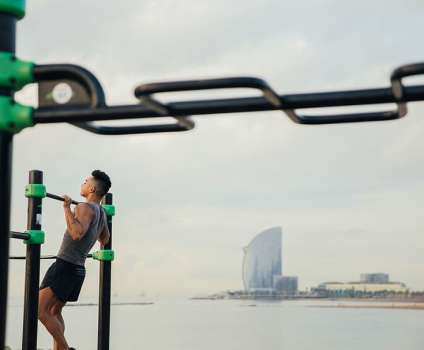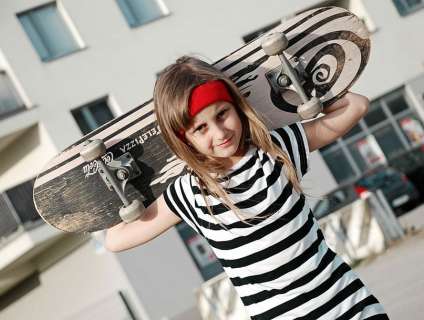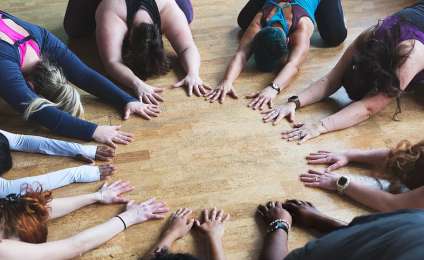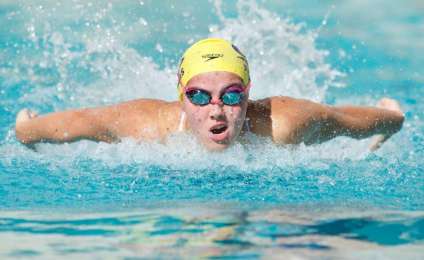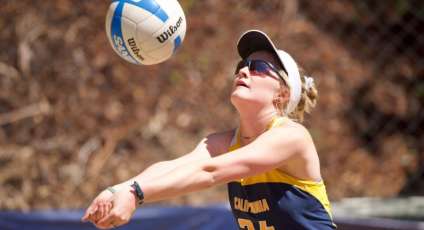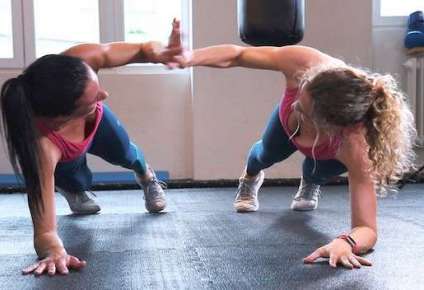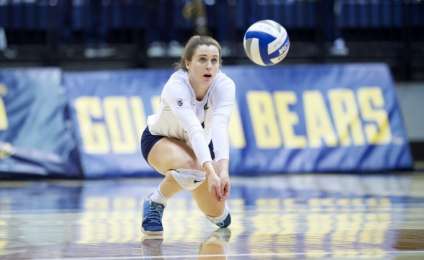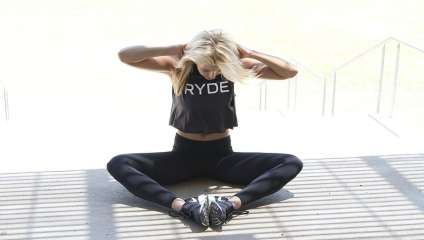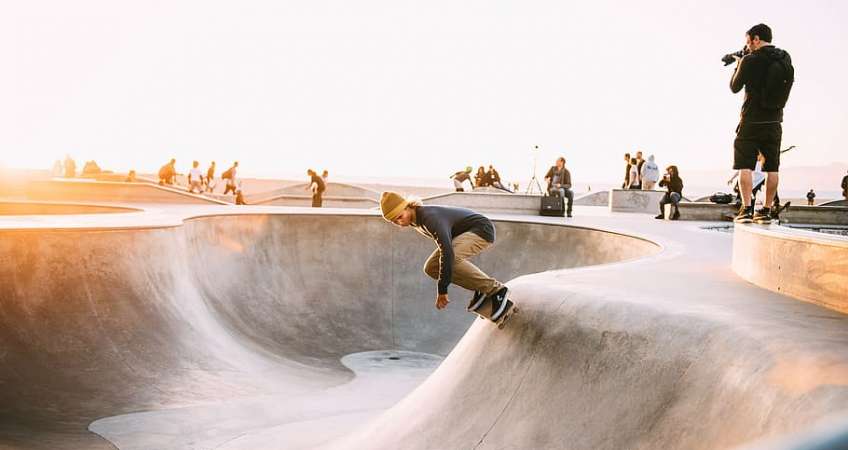Sports photoshoot - everything you need to know about photography.
Published: 01.12.2020
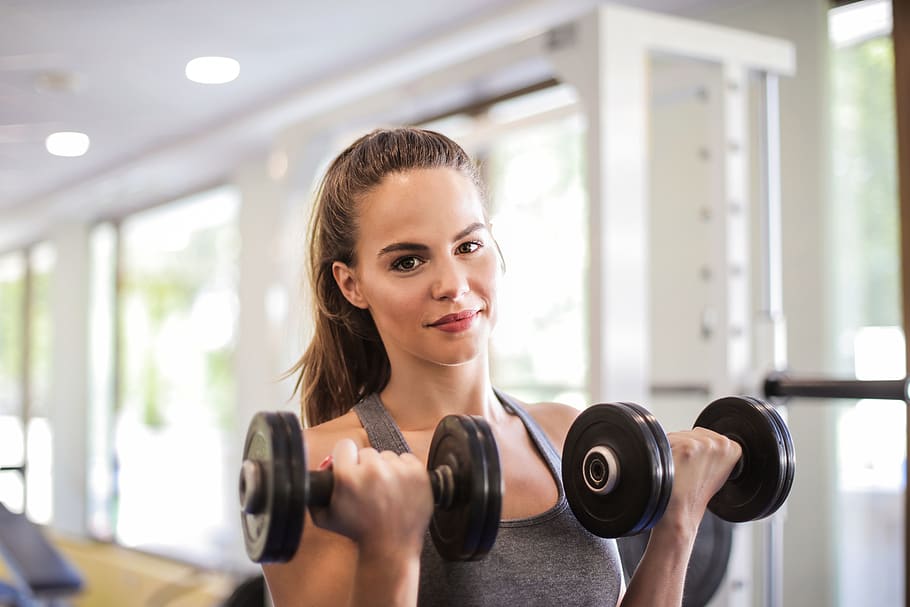
Sports photography is one of the most challenging types of photography. Capturing fast-moving objects is much more difficult than capturing still objects. Our tips will help you conduct a great sports photoshoot.
Sports photography is the photography of sports, games, exercises, and training sessions. A sports photoshoot includes portrait shots, close-ups, and group shots. To show contrast, behind-the-scenes images are often included in sports photography – capturing the preparation for training or performances. The photographer has little control over the pose and background, so angles and perspectives are crucial.
Whether you are capturing your children's sporting events, covering amateur or professional sports competitions, the tips in this article will help you become more confident in sports photography.
Sports photoshoot. Where to start?
Every type of sport is unique, so a different approach is required for proper shooting. Before conducting a sports photoshoot, for example, in a gym, do your homework. Visit the gym as a spectator or watch workouts on YouTube. Pay special attention to the participants' behavior. Are there movements or transitions that look more dynamic and interesting than others? How long does each element of the exercises last? Will you have time to shoot from different angles?
Sports photography can often be disappointing, especially when you are just starting out. Sometimes you may take great photos only for people familiar with the sport to criticize them for minor details. It's not a big deal - it happens to everyone.
One solution is to talk to professional athletes. Explain that you are a novice in sports photography and ask them what you should capture in the frame. Most people will be happy to share details about their training sessions or performances.
Create a Light album from cool sports photos. You don't need to print the photos separately. We will print your photos directly on the pages of the Light album. Upload your images to the free editor Mapi7 and create a thematic Light album. You can upload photos from your phone.
The fastest way to find out which shots work is to study photos of other people in the same sport you want to shoot. Then try to replicate those photos yourself when you are shooting on the sports field.
Shoot towards the model
If the face of your model can be seen in the frame, it must be included. Everything from a side angle to a straight-on shot will work. But something in between gives a sense of depth.
Racing cars look fantastic when shot head-on. However, small objects like trainers do not fill the frame enough. Therefore, it is best to try to shoot such objects somewhere between the side and the middle.
In gyms, exercise machines can block the athlete's face, which is undesirable. Therefore, choose a side from which you can capture the athlete's face.
There are always exceptions to the rules: motorcycles and racing cars often look very good from behind.
Take a photo with your back to the sun.
If you are conducting a sports photoshoot outdoors, always try to shoot the athletes when the sun is behind you. This will provide good lighting for your subjects. If you shoot against the sun, you are more likely to get silhouettes of the subjects.
When shooting outdoors, a slightly overcast day is best - without direct sunlight. However, weather cannot be controlled - so it is important to know how to work in any conditions.
Please note that shooting in the sun can work in your favor. Direct sunlight provides an opportunity to capture the silhouettes of models.
Direct sunlight creates harsh dark shadows and bright highlights. Digital cameras cannot capture details in both extremes - almost black and almost white. Therefore, make sure that the most important part of the athlete is well exposed. If the model's face is visible, expose it to reveal facial features. Do this even if other areas of the scene will be too bright or too dark.
A sports photoshoot of girls and boys on the street is enriched by a natural background (trees, grass) or an aesthetically pleasing background that adds context, such as fences or spectators. However, there may be random spectators with bright jackets and advertising posters. From a purely aesthetic point of view, they are generally undesirable as a background.
If you want to achieve the best results for a sports photo shoot outdoors, look for a cleaner and less cluttered background.
Set up the camera
If you are conducting a photo shoot in a sports style for a portfolio or personal archive, you may ask the subject to pose. But when you are capturing moving objects, you will need a long lens. Large objects (such as cars and horses) can often be photographed using a long end lens of 70-200mm.
For smaller models such as runners, cyclists, motorcyclists, snowboarders, skiers, and skateboarders, longer lenses of 300mm and above will be needed. You can also use shorter lenses, but then you need to be closer to the action.
If your lens or camera has image stabilization, make sure to turn it on. This will minimize blurriness caused by shaky hands. It is important to understand that image stabilization cannot compensate for moving subjects.
To capture a person with minimal motion blur or without it, for example during interval training, a fairly short exposure time is needed. If your lens is set to a focal length of 200mm, you will need a minimum exposure time of 1/200 sec. The camera may only offer 1/180 or 1/250 sec, so choose the shorter exposure time - 1/250 sec.
In sports photography, when shooting fast-moving athletes, choose shutter priority (TV or S on your camera's shooting mode dial). This will allow you to control the shutter speed and give the camera the instruction to select the appropriate aperture and ISO to complete the exposure triangle.
The most effective way to do this is to use a technique known aspanoramic viewFollow the movement of the athlete using the camera, trying to leave some space in front of you. Continue smoothly tracking the subject and when you reach the chosen point, press the shutter release button without stopping the smooth movement of the camera. Carry on until the end even after pressing the shutter release button. As a result, you will get much higher quality, sharp images with an even more blurred background.
Smudge parts of the object
When you learn how to pan well, experiment with longer exposures. This will add more background blur or intentional blurring of the subject. You can blur fast-spinning car wheels, bicycle wheels, a runner's legs, or a basketball player's hands. It's a risky strategy, but it leads to stunning photos that truly capture the motion of the subject.
Give the object a place in the frame
A common mistake that all photographers make from time to time is to shoot a model in the center of the scene. Even for a stationary object, this is not ideal. And with a moving athlete, the problem is compounded.
Without space for the object to move, the photograph appears cramped due to overly tight framing.
By leaving enough space in front of the athlete (in the direction of their movement), the viewer will see where the object is moving, even if it's just a few meters of space. This emphasizes the sense of movement and makes sports photos more dynamic and aesthetic.
Create a sequence
Photographing a sequence of actions will help show you the movement in a still image. Such photos display the movement of the athlete and their equipment in the surrounding environment.
Photograph a variety of tricks or styles instead of just one. This is a very interesting way to showcase sports such as skiing, snowboarding, or skating.
Creating one of these sequences involves photographing an object in the middle of action. By using the burst mode, you capture many continuous images. Then they are stacked together. In the end result, you will see multiple shots of the athlete in the same environment.
When it comes to printing photos, Mapi7 offers a great idea - a personalized photo calendar. The perfect gift or a beautiful way to showcase your favorite photos - all reasons to order a photo calendar.
Add sharpness
It is important for your model to be in focus as much as possible. If a short exposure is selected, you will need to use the largest available aperture. This will allow you to capture as much light as possible in a short amount of time. The downside of large apertures is a shallow depth of field, where in most cases everything in front and behind your subject appears blurry or out of focus.
One of the techniques for adding sharpness is to increase the camera's ISO setting, so that the sensor becomes more sensitive to light and the camera can choose a slightly smaller aperture. This provides greater depth of field and keeps a larger part of the subject in focus.
Sports photoshoot - a story, drama, emotions, and humor.
Fast-moving objects give little time to react to unexpected moments. A disobedient horse may rear up at any moment, and a sports motorcycle can accelerate sharply. The ability to anticipate such moments increases the chances of capturing truly exciting shots.
Try to capture all the highs and lows experienced by athletes. Dramatic photos of when things go wrong can be truly impressive. A runner falling during a sprint, or a cyclist getting a flat tire, are very popular subjects in sports photography.
Sports photos of your children, friends, or teammates are a great way to capture vivid memories and have fun at the event. With a camera, you can be right in the heart of the excitement of the sports event, instead of sitting on the sidelines.
Sports photography is a fantastic way to get more excitement from photography. Unlike everyday photography, there is more adrenaline in the frame. We hope that from this article you have learned a few practical tips that can be applied during a sports photoshoot to achieve professional results.


